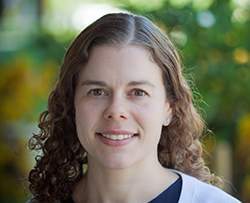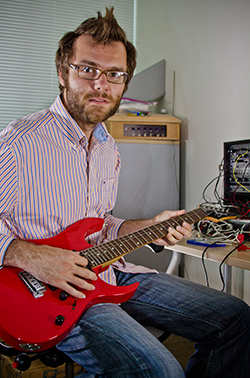Faculty Invited to Exclusive Symposium for ‘Creative Young Engineers’
By:
- Catherine Hockmuth
Published Date
By:
- Catherine Hockmuth
Share This:
Article Content
Jacobs School of Engineering professors Karen Christman and Gert Lanckriet are among 81 of the nation’s most “creative young engineers” selected to attend this year’s U.S. Frontiers of Engineering symposium by the National Academy of Engineering. Participation in the event is by invitation-only to engineers between the ages 30 to 45 who have “demonstrated accomplishment in engineering research and technical work with recognizable contributions to advancing the frontiers of engineering,” according to an NAE announcement.

Bioengineering professor Karen Christman
The U.S. Frontiers of Engineering will be hosted by DuPont on Sept. 19 to 21 at the Hotel DuPont in Wilmington, Del. This year’s conference will focus on four broad topics: designing and analyzing social networks; cognitive manufacturing; energy and reducing dependence on fossil fuels; and flexible electronics. The participants -- from industry, academia, and government -- were nominated by fellow engineers or organizations and chosen from 310 applicants.
“I look forward to attending the meeting. It is a unique opportunity to hear about and discuss important engineering topics outside of one’s own discipline,” said Christman.
“The well-being of society will rely on engineering ideas developed by our nation’s leading technological thinkers,” said NAE President Charles M. Vest. “The Frontiers of Engineering program gives some of our most talented early career innovators the opportunity to create interdisciplinary relationships that are critical to shaping and advancing the future.”
Christman is a professor in the Department of Bioengineering who is developing biomaterials for tissue engineering and regenerative medicine applications with a particular focus on cardiovascular disease. Christman received the NIH Director’s New Innovator Award in 2008 and the NIH Director’s Transformative Research Award in 2012. Recently, her lab developed a new injectable hydrogel that could be an effective and safe treatment for tissue damage caused by heart attacks.
In a recent study published in Science Translational Medicine, Christman reported the semi-solid, porous gel encourages cells to repopulate areas of damaged cardiac tissue and to preserve heart function. The hydrogel forms a scaffold to repair the tissue and increases cardiac muscle. Christman, who joined the faculty of the Jacobs School of Engineering in 2007, has co-founded a company, Ventrix, Inc., to bring the gel to clinical trials within the next year. Therapies like the hydrogel would be a welcome development, Christman explained, since there are an estimated 785,000 new heart attack cases in the United States each year, with no established treatment for repairing the resulting damage to cardiac tissue.

Electrical and Computer Engineering Professor Gert Lanckriet
MIT’s Technology Review magazine recognized electrical engineering professor Gert Lanckriet as one of the world’s top young innovators under 35 for 2011. He was honored for his research that promises to significantly improve how people search, discover and recommend music online. Lanckriet joined the Jacobs School’s Department of Electrical and Computer Engineering in 2005, where he also heads the Computer Audition Laboratory and an interdepartmental group on Computational Statistics and Machine Learning. Lanckriet’s work combines convex optimization and machine learning to automatically analyze and index very large music collections. Lanckriet foresees a time when cell phone sensors will track the activities and moods of individual cell phone users and use that data to provide a personalized radio service – the kind that matches music to one’s activity and mood, without repeating the same songs over and over again.
“What I would like long-term is just one single radio station that starts in the morning and it adapts to you throughout the day. By that I mean the user doesn’t have to tell the system, ‘Hey, it’s afternoon now, I prefer to listen to hip hop in the afternoon.’ The system knows because it has learned the cell phone user’s preferences.”
Share This:
Stay in the Know
Keep up with all the latest from UC San Diego. Subscribe to the newsletter today.



